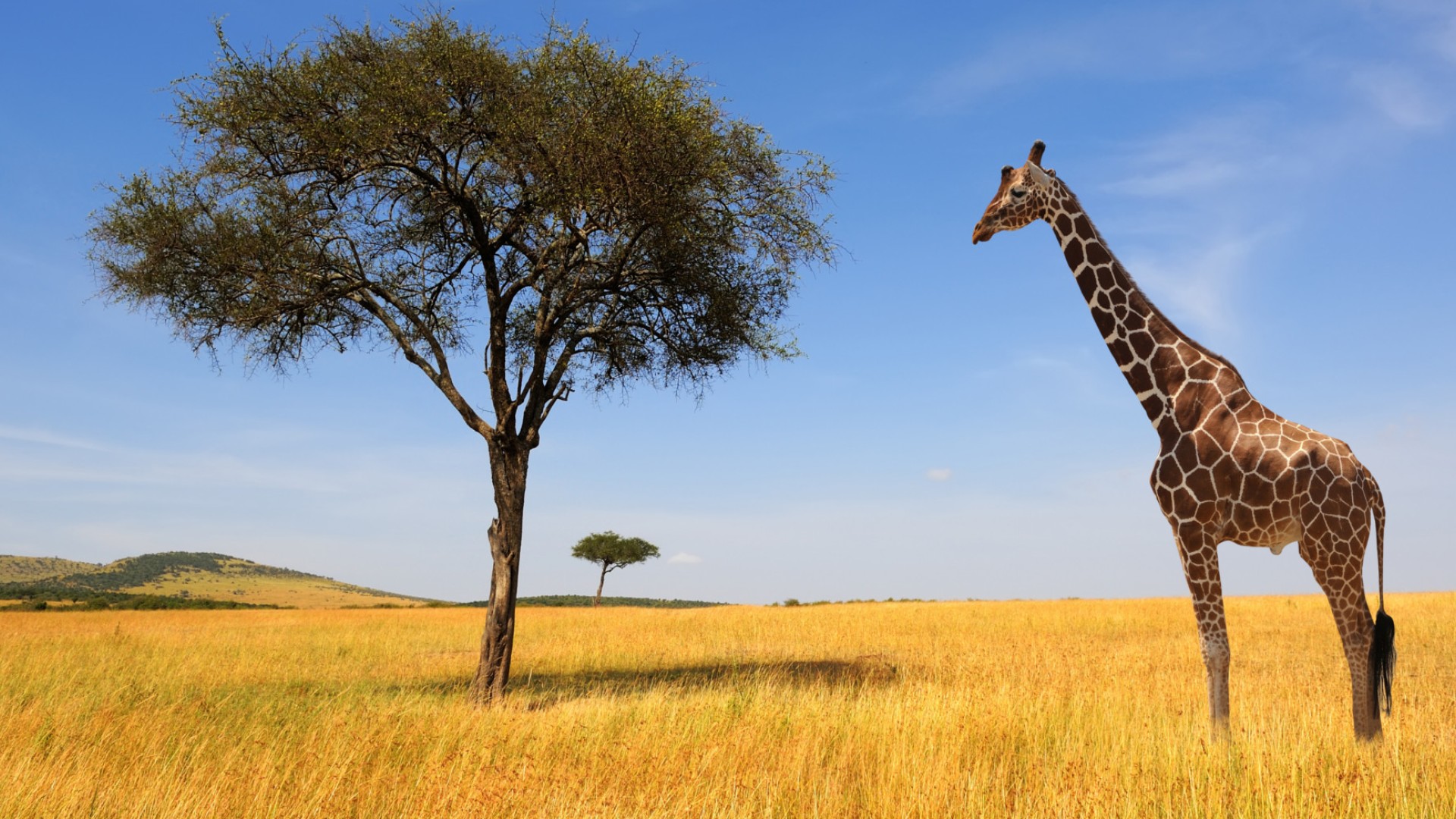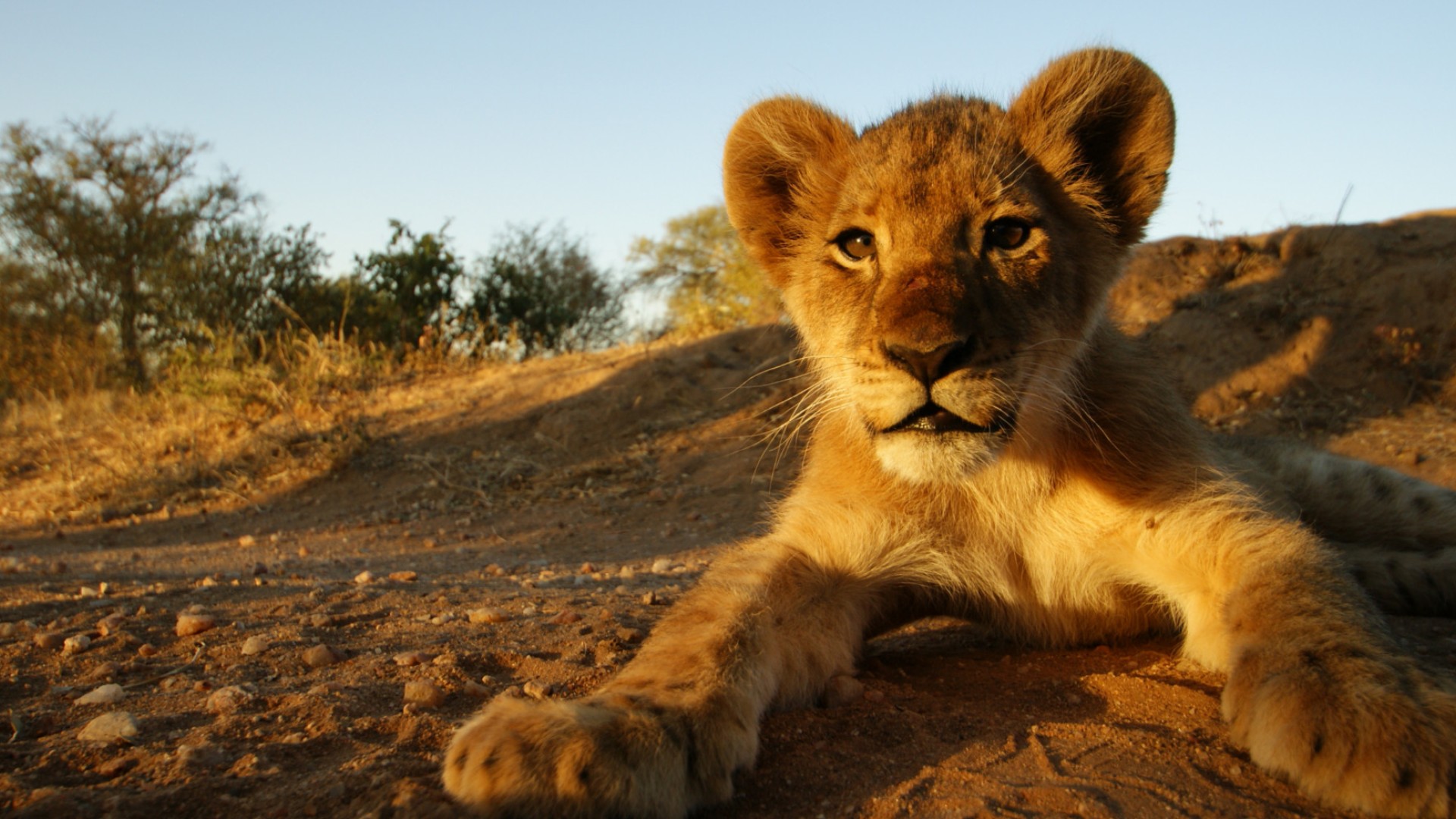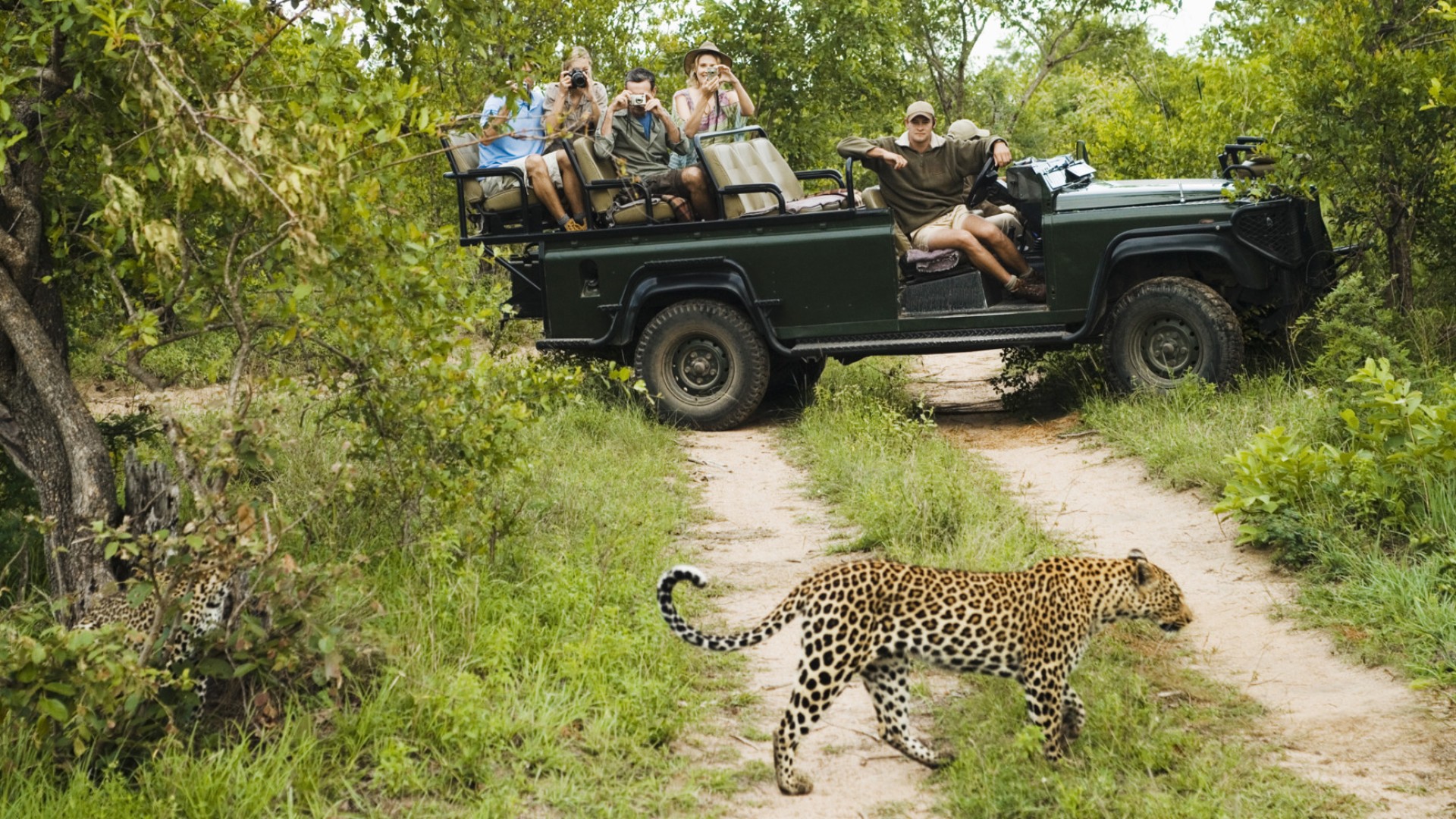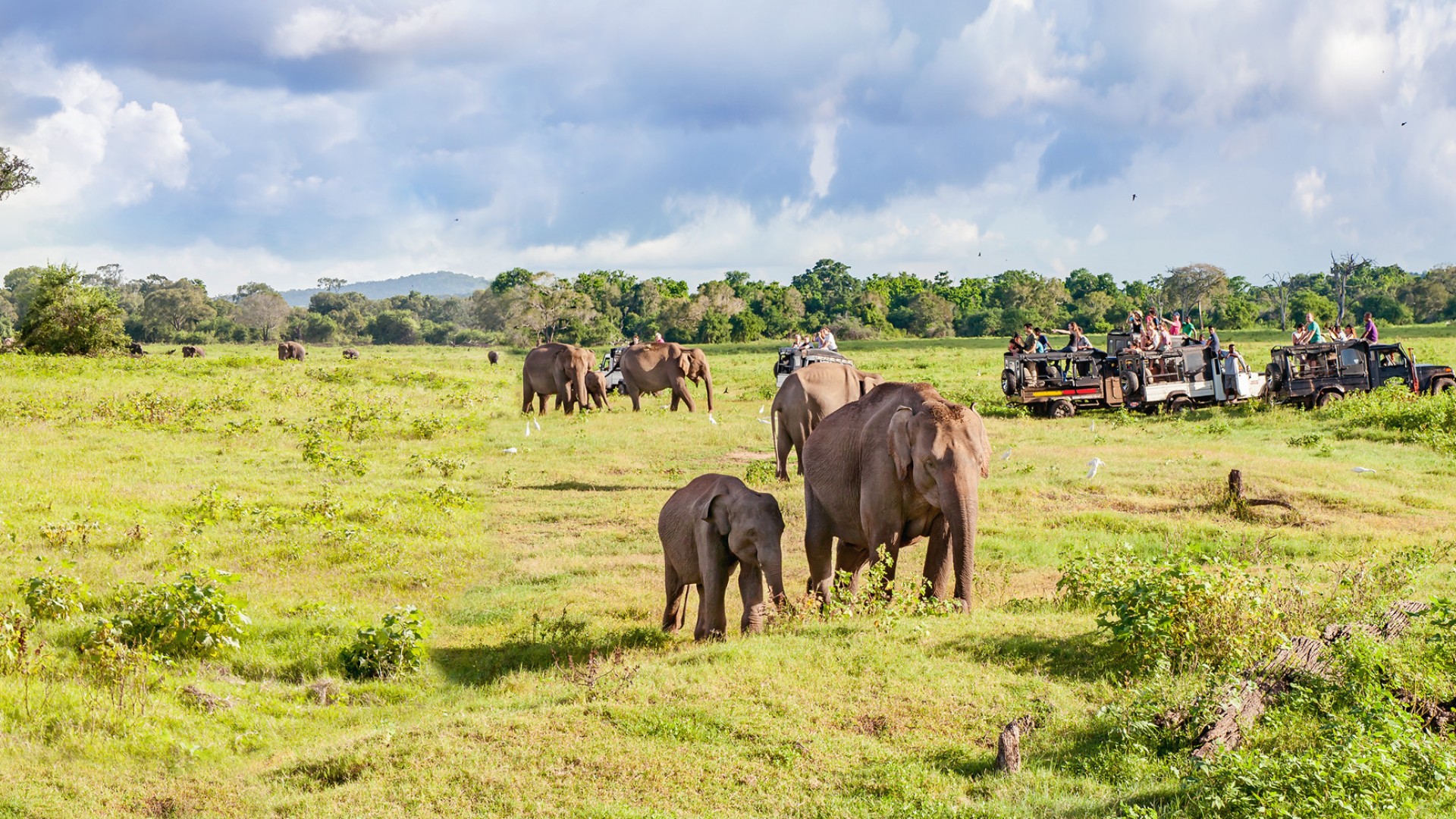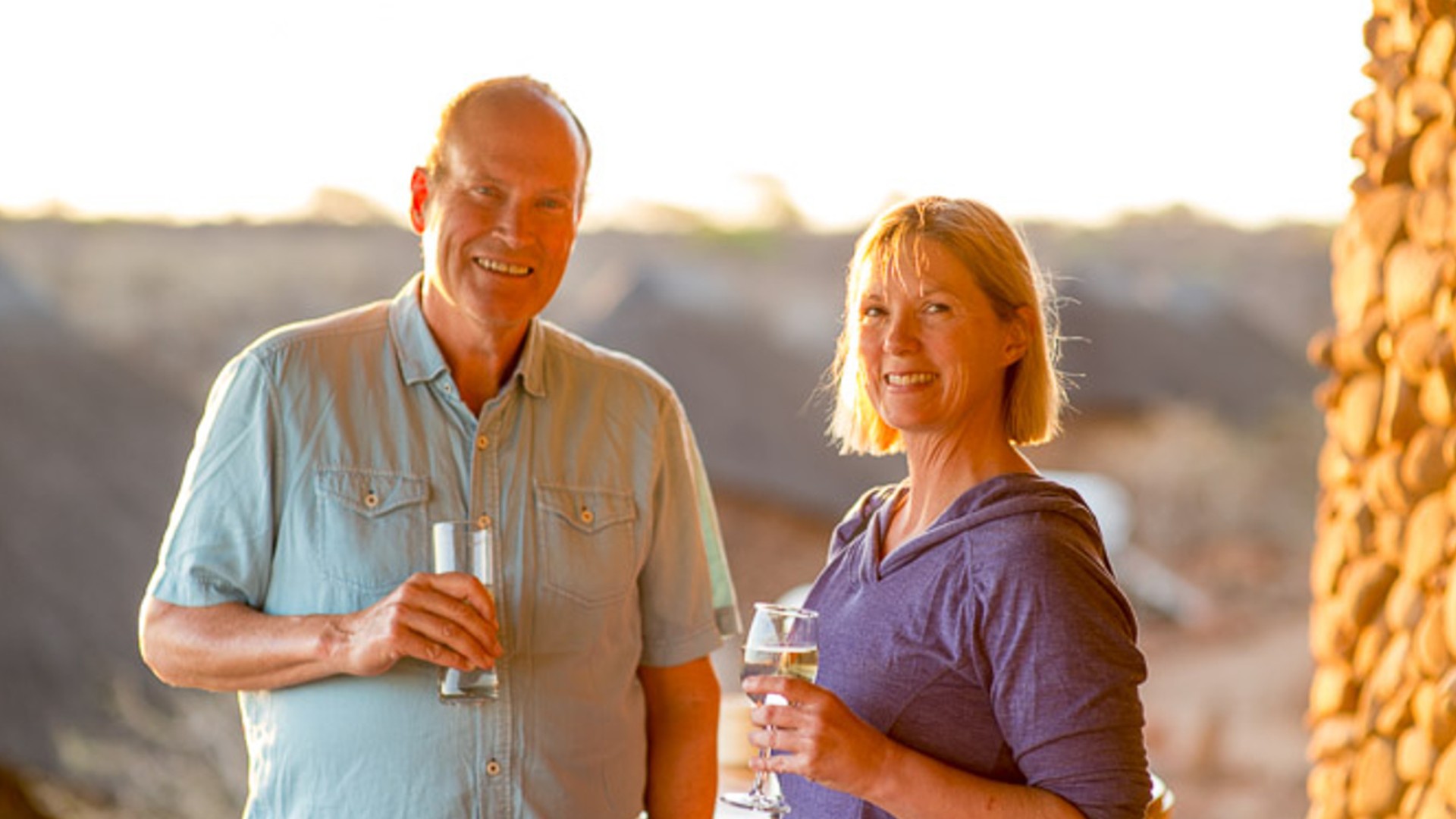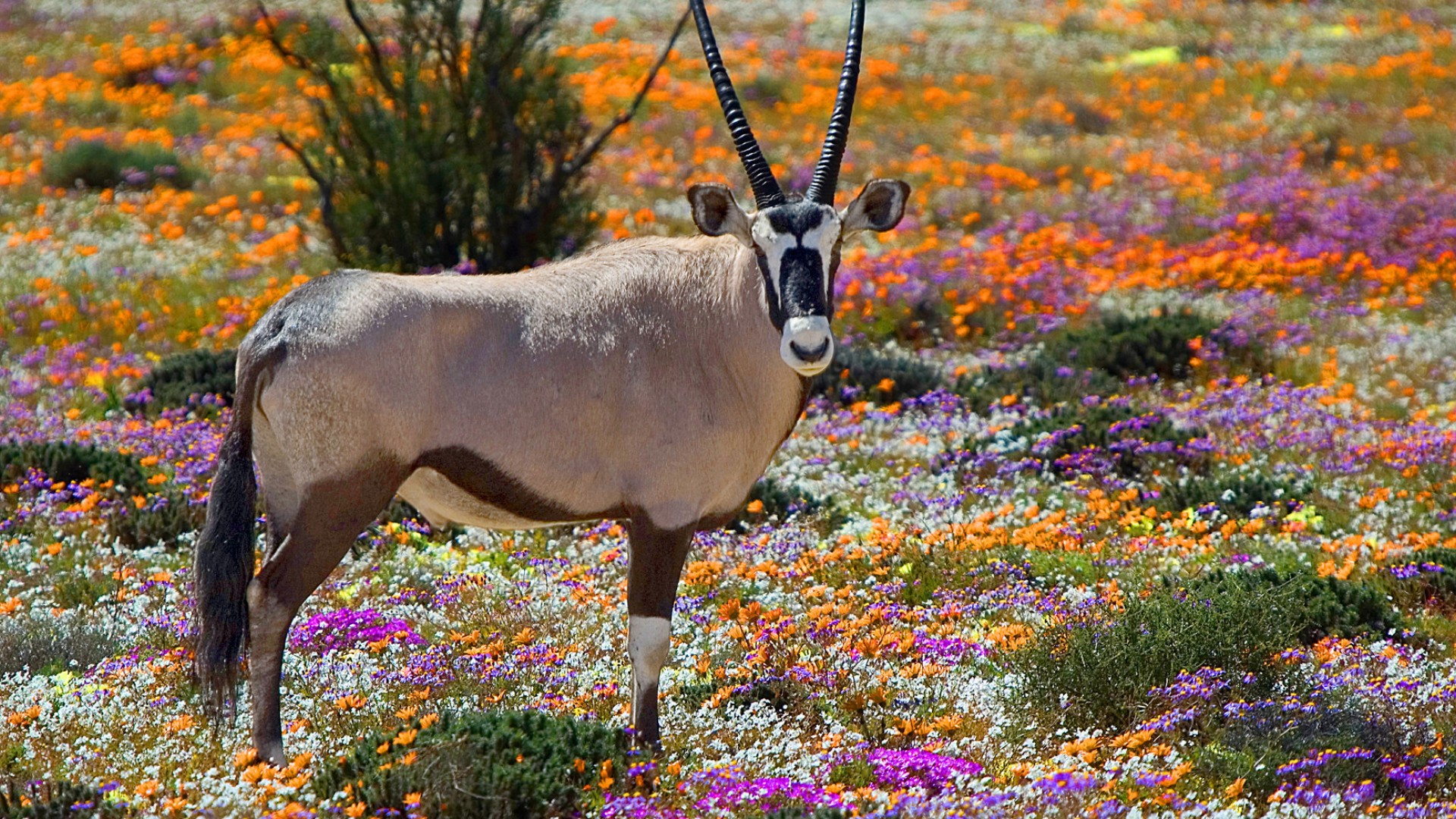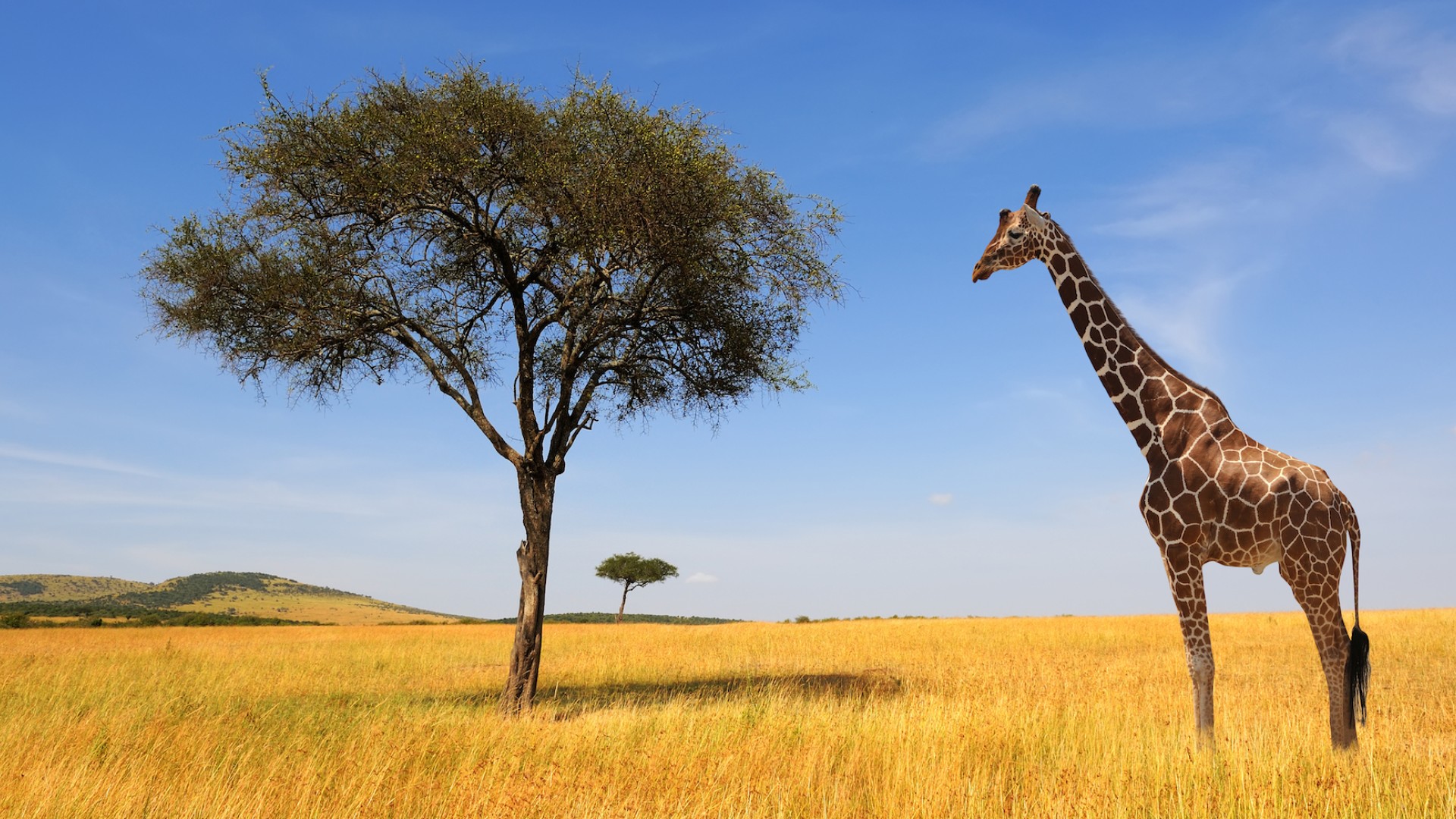Overview
From the wildlife-filled plains of Kruger to the sun-drenched vineyards of the Cape Winelands, South Africa is as diverse as it is majestic. It’s one of the most popular destinations in Africa for safari visitors wanting to tick the “Big Five” off their list while boasting energized cities and a beguiling coastline just waiting to be explored. Rich culture and heritage, varied natural habitats, and a picturesque coastline characterize the natural beauty of South Africa. The crystal blue waters of the Indian Ocean offer an experience completely unique to Africa, with boundless opportunity for snorkeling among tropical coral reefs, strolling along white sandy beaches, and basking in the orange glow as the sun kisses the water on the horizon. Inland, catch a glimpse of iconic African wildlife including elephants, giraffes, rhinos, lions, cape buffalo, leopards and more.
Our tours to South Africa venture off-the-beaten-tourist-track while still capturing the essence of what it means to visit this fascinating country. You can spot white lions in Timbavati Private Game Reserve and journey through the legendary Sabi Sands or discover the remote beauty of the Leshiba Wilderness. Slowly paddle along the glorious coast of False Bay, watch waddling penguins on the Cape Peninsula, and discover why Cape Town is arguably one of the world’s most beautiful cities with sweeping 360-degree views from it's impressibe cliffs. Join Adventures Unbound and discover the diverse wonderland of sensory delight that’s sure to leave you breathless!
Custom Tours in South Africa
Let us design a custom tour for you!
Our staff has invested years in exploring the vast wilds of South Africa, uncovering the best safari spots, accommodations, wildlife hotspots, hiking trails, restaurants and more. Our expansive knowledge goes into handcrafting immersive, authentic South African tours that go beyond the bounds of most tour companies.
South Africa Unbound has learned all we can about the country and nurtured lasting relationships with local affiliates and partners so that we can curate private, custom tours for you no matter your area of interest. Whether you’re hoping for a special interest tour as a wildlife lover, birder, biker, hiker, foodie. camping-enthusiast and more, we can turn your safari fantasies into a reality.
Please help us plan your best possible trip by filling out the form below, letting us know what places and/or activities most interest you.
If you're interested in one of our scheduled group departures, but would like a private adventure, we can do that too! Just tell us a bit more about your group on our private adventures page.
To get started, we'll need to know:
Image & Video Gallery
Country Guide

History
Though South Africa may be most famous as the home of renowned president, activist, and spiritual leader Nelson Mandela, it nonetheless has an ancient, rich history dating back hundreds of thousands of years.
Throughout the country’s history the land has been home to incredibly diverse people and cultures, reflected in the contemporary use of eleven official languages. However, since the colonial and post-colonial eras, this diversity has also been a source of internal strife and tension.
South Africa was called home by the descendants of the Bantu people before European colonization, and the first Dutch settlement in the area was founded in the mid seventeenth century near Table Bay. It wasn’t until the nineteenth century, with the discovery of gold and diamonds in the region, that the region became a coveted colonial prize for European powers. The South Africa Act of 1909 united four colonial regions into unified South African colony. This region became a self-governed state within the United Kingdom in 1934 before gaining full independence in 1961.
From 1961 until the 90s, South African was dominated by the white Afrikaner minority and infamous for the segregationist legislation known as apartheid, an Afrikaans word meaning separateness. However, after decades of armed struggle against the apartheid regime, Nelson Mandela and the ANC were victorious in the South Africa’s first fully democratic election in 1994.
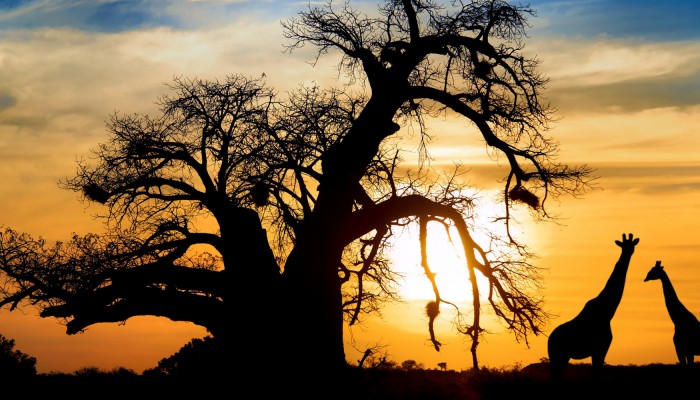
Wildlife
About three hundred species of mammals live in South Africa, a large number considering the relative smallness of the country. Similarly, over eight hundred species of birds inhabit the country. In comparison the United States has almost three times the total area of South Africa, but less than one hundred more species of mammals and birds.
Sadly, some species, such as the hippopotamus, were once common in South Africa and are now either extremely rare or not found entirely. Many of these species can be found in countries throughout Africa, such as leopards, hyenas, kudus, impala and more. Nevertheless many species are found only in South Africa or its neighboring countries.

Flora
South Africa has 20,000 documented different species of plants, amounting to about 10% of the plant species in the world. What makes this statistic even more remarkable is that only 1% of the country is forested.
Though South Africa can boast of a large amount of grass species, the number of fungi that grow in South Africa dwarfs the amount of plants that grow in the country. As of the early twenty-first century, it was estimated that 200,000 species of fungi grow in South Africa. This was considered a conservative estimate, given that it discounted a large amount of fungi associated with insect biodiversity.
Further, South Africa is home to one unique genus of plant: the protea, or sugarbushes as they are sometimes called. 130 different species of protea are found in South Africa. In local South African cultures these often represent hope and change. Due to the genus’s diversity in form, it was named for the Greek god Proteus, who could change his appearance at will. Though native to South Africa, these plants have been immensely popular throughout history and have been exported around the world.
The remainder of South Africa's flora can be largely distinguished by geographical region:
- Highveld: Much of South Africa's flora are different grass species found in the vast grasslands of the Highveld. There are also an incredible amount of low growing shrubs and acacia trees, such as different varieties of camel-thorn and whitethorn trees.
- The Northwest: The northwest is home to a number of aloe and euphorbia succulents, which survive in the harsher climates due to their ability to store water.
- The Northeast: The northeast is home multiple varieties of baobab trees flourish.

Culture
South Africa is one of the most culturally diverse countries in the world, as demonstrated by its eleven official languages. However, there are also more languages not officially recognized, including the endangered Khoisan and Indian languages, such as Hindi. It is also considered the 8th most ethnically diverse country in the world, according to the Ethnic Fractionalization Index. The population is composed of numerous tribes native to the region, including the Zulu, Xhosa, Sotho, Khoisan and many more, combined with the mixed-race Coloured population, the Afrikaner white population, and a number of Asian groups, mostly made up of Indians.
Art
The oldest known art objects originate from Africa. The oldest of these are two “kits” dating from around 100,000 years ago, which are thought to have been used for the production and storing of ochre. Another artifact includes a bundle snail shells, thought to be around 75,000 years old and used as a necklace. There are also numerous cave paintings of eland and other animals dating around ten to thirty-thousand years old, created by the Khoisan and Bantu peoples.
Since the nineteenth century modern art is often locally influenced from the various towns and even mines throughout South Africa. Contemporary artists are well versed in technologically based mediums, such as photography, animation, and film. Marlene Dumas is South Africa’s most famous painter, most famous for her portraits. She currently lives in Amsterdam. Other famous artists include filmmaker William Kentridge and photographer Zwelethu Mthethwa.
Literature
Alan Paton became one of the most famous novelists of the twentieth century with his landmark novel Cry the Beloved Country, a novel of social protest against the structures that would come to be called apartheid. Paton himself was an anti-apartheid activist who died in 1988, less than a decade before the apartheid era came to an end. Famous fantasy novelist JRR Tolkien was born in South Africa in 1897, though he only lived there for a few months as an infant. South Africa also has a rich tradition of oral poetry, stemming from the tribes in the region. Several poets, such as Zakes Mda and Mongane Wally Serote have also rose to prominence and are regularly taught in schools.
Music
Western music was first taught in South Africa by Christian missionaries, which created a unique genre of South African gospel music. It maintained a distinctly South African flavor, however, while incorporating spiritual Western themes. Over the years music in South Africa has evolved, being influenced by, while simultaneously influencing, Western music. The best example of this is Paul Simon’s Graceland. In 1986 Paul Simon, in defiance of the cultural embargo on South Africa due to apartheid, collaborated with Ladysmith Black Mambazo on his landmark album. Aside from bringing South African music and musicians to the attention of Western consumers, the collaboration also demonstrates the influence South African musicians have had on Western popular music.
Cuisine
Cuisine in South Africa can, like many things, be broken up into two kinds: the traditional, pre-colonial cuisine and colonial-nfluenced cuisine.
Pre-Colonial Diet:
The Pre-colonial diet mainly consisted of cooked grains, fermented milk, and roasted or stewed meats. Sorghum used to be the primary grain, but at some point it was replaced with maize. There is debate about whether maize, a Central American crop, was introduced by colonists or native Africans returning from the slave trade. Sheep, goat, cattle, and native game are the most commonly used meats and they are all central to the diet of South Africans; vegetarianism is often perplexing to South Africans. Pumpkins are a traditionally used vegetable, as there are many varieties of pumpkin native to South Africa.
Colonial-Influenced Cuisine:
A number of cuisines were brought to South Africa due to colonialism. Cape Dutch is a style of cooking that makes frequent use of nutmeg, allspice, and chili peppers. Due to the importation of Indian workers in the nineteenth century, Indian cuisine is incredibly popular as well. Curried dishes made with lemon and chutneys are common. Bunny chow, a hollowed out loaf of bread filled wiht curry, is a popular fast food dish that originates with the South African Indian population.
Wine:
Interestingly, South Africa has also developed into one of the worlds leading wine producers, producing the ninth most wine in the world. Constantia, a suburb of Cape Town, is particularly known for its delicious wine and long history. The Constantia vineyard was first established in 1659, though Stellenbosch, the country’s second oldest winery, has surpassed it in terms of production.
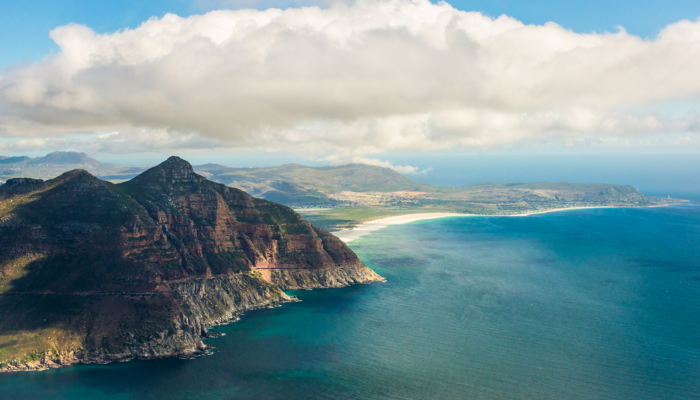
Geography
The Great Escarpment and the Central Plateau
At the southernmost tip of the continent, South Africa has more than 16,000 miles of coastline. The occupying area of coastline and land close to sea level is relatively narrow, with the majority of the country lying atop the Great Escarpment, a central plateau. This plateau is the most important geological formation in the country and has many names for the many different sections, the most notable being the Drakensburg. The Drakensburg is about half the total length of the Great Escarpment, though it is most notable for bordering the landlocked country of Lesotho. Here the elevation is nearly 10,000 feet, the highest section of the Great Escarpment.
Meanwhile the central plateau has a range of elevation of around 1,000 to almost 7,000 feet. The most prominent portions of the plateau are known as the Highveld and Lowveld. These make up much of South Africa's north and east interior. The Highveld is much more temperate and is predominantly made up of vast grasslands. Meanwhile, the Lowveld, lying in the Northeast and bordering Botswana, Zimbabwe and Mozambique, is much hotter with sparse cultivation.
The Coastal Plain and Coastline
South Africa’s coastal plain is quite narrow, ranging from about 60 to 160 miles in width and slopes gently southwards towards the coast. This region has a number of small rivers, save for in the west where there are few due to that region’s aridity. The coastline is relatively smooth and flat but has very few natural harbors.
Fun Fact: This lack of natural harbors was a natural defense against European colonialism for many years as sailors had a difficult time landing ships along the coast. Without a natural harbor, European ships had little shelter from the violent storms of the southern Atlantic and Indian Oceans.
The Cape Fold Mountains
The Cape Fold mountain range, South Africa's largest, runs along the southwest coastline of South Africa for about 500 miles. Though arid for most of the year, these mountains are usually snow-covered in winter. The Cape Fold mountains, along with most of the central plateau, have a very long and complex geological history that has resulted in their unique formations today. Interestingly, this is the region where most of South Africa’s wine grapes are grown.
Fun Fact: The Cape Fold mountain region is also famous for its ostrich farms.
The Great and Little Karoo
The other large section of South African interior, along with the Highveld and Lowveld, are the Great Karoo and the Little Karoo. The Great Karoo is a large semi-desert region directly north of the Cape Fold Mountains. The Karoo is famous for extremes: great heat and great frosts; great droughts and great floods. Though the region gets remarkably little rain, it is habitable due to the abundance of groundwater found in the region, making agriculture and pasture possible.
The only geographic boundary of the Karoo is the Cape Fold mountain range to the South. How far it extends to the north, east, and west is up for debate. The Little Karoo on the other hand is nestled in the Cape Fold Mountains. The Karoo is characterized by an abundance endemic South African vegetation.

Climate
South Africa has a fairly temperate climate due to its proximity to both the Atlantic and Indian Oceans. However, due to varied topography and the influence of the oceans, there is great variety of climate zones within the country, ranging from extreme desert to tropical. These zones vary mostly by geography.
South-Westernmost Coast:
Part of the Western Cape province, the south-western coast is essentially a classic mediterranean climate. This region is typically hot and dry in the summer, with mild, somewhat rainy winters. However, it is important to remember that, since South Africa is in the Southern Hemisphere, the rainy months are typically May to August.
Eastern Cape:
Part of the KwaZulu-Natal provinces, the Eastern Cape also has a mediterranean climate. Rain tends to fall throughout the year as opposed to falling exclusively in the winter months.
Northern Cape:
The Northern Cape province is mostly arid, receiving an average rainfall of about eight inches a year. Comparatively, certain regions in the Western Cape province receive as much as 40 inches a year. Much of the Northern Cape province deals with extreme heat during the summers, with average January temperatures around 86 to 91 °F. Winters in this region are generally much cooler, with July temperatures topping out at around 65 °F, and are mostly dry. However, some regions within the Northern Cape province, particularly Sutherland, experience bitterly cold winters and frequently get snow.
Steppe:
South Africa's large steppe region, where Johannesburg is located, encompasses much of central South Africa, as well as some northern and southern territory. This region, encompassing parts of the Free State, north west, and Limpopo provinces, enjoys a typically mild, sunny climate that is mostly dry, with the occasional summer downpour. During the winter, the temperature occasionally drops below freezing causing a frost, but it rarely snows.
Remainder of Free State and small parts of the surrounding provinces:
This continental climate zone experiences hot summers and cold winters. Eastern areas experience snowstorms in the winter, but most of the precipitation comes from brief, but often violent thunderstorms in the summer.
When to Visit:
When to travel to South Africa all depends on what you’re going for. Weather can vary greatly by region throughout the year, though in general summer you can typically expect very warm weather. Winter temperatures are fairly mild in most parts of the country, though some parts can get very cold.
Late autumn into winter, or May to August: ideal for wildlife watching and is also the cheapest time to go. School holiday is typically from late June to mid July, a time when prices will rise, but not significantly.
Spring, September to October: the best time to go for seeing wildflowers, just when everything starts blooming.
Summer: peak beach and tourist season.
December to mid March: popular spots will be booked months in advance and prices will rise, sometimes by more than 50%.
Travel Essentials

Money in South Africa
Currency
South Africa’s currency is the rand (R), a currency shared by Lesotho, Swaziland, and Namibia.
ATMs and Credit Cards
ATMs are found throughout the country and cards are readily accepted in most places.
Tipping
Wages are often low and tipping is expected in restaurants, cafes, hotels, and taxis.
Estimated Daily Costs
Daily costs can range from about one to two thousand rand, or about $70 to over $150 USD, depending on the traveler’s discretion. A hostel bed can cost around R160, while a hotel room can cost anywhere from R400 to over R1500. Meals range from R75 for fast food to R150 for a more high end meal. Transportation is pretty easy and cheap in South Africa. There are buses in and between cities. Two week hop-on, hop-off passes cost around R410. A flight between Cape Town and Johannesburg costs around R950.

Health & Safety
The biggest risk tourists face is theft and scams. By using extreme caution with information and keeping money or cards in secure places, travelers can stay one step ahead of thieves. The most common scams involve tampering with ATMs to steal cards, PINs, and cash. Thankfully, most ATMs have security guards. Only use those with security guards and avoid using ATMs at night. If your card jams have a friend get help and don’t leave the ATM with your card still inside. If someone suspicious is hanging around an ATM, find another. Avoid ATMs that seem to have been tampered with or that do not issue receipts. Refuse all help with transactions and if someone offers, find another ATM. At the very least keep your bank’s phone number close and if there is a problem, call your bank to immediately cancel your card.
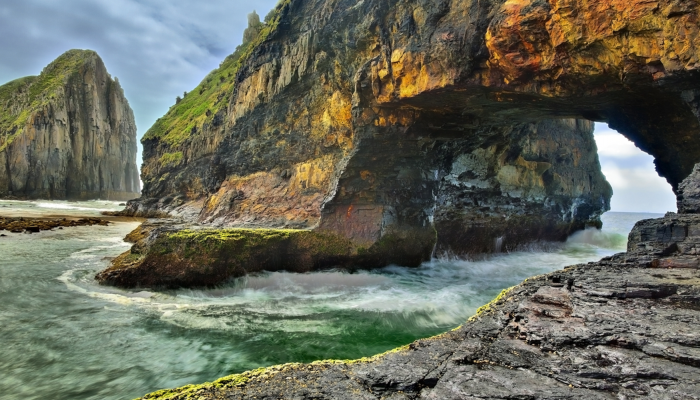
Entry Requirements
Passports
Visitors should have a passport valid for 30 days after your intended departure with at least two blank pages.
Though immigration officers rarely ask, be prepared to show evidence of onward travel, or a return flight, from South Africa.
Visas
Travelers from most European countries, Canada, Australia, the UK, and the US are issued free 90-day visitor permits upon arrival in South Africa.
Travelers from anywhere else, including New Zealand as of January 2017, must first acquire a visa from a nearby South African diplomatic embassy.
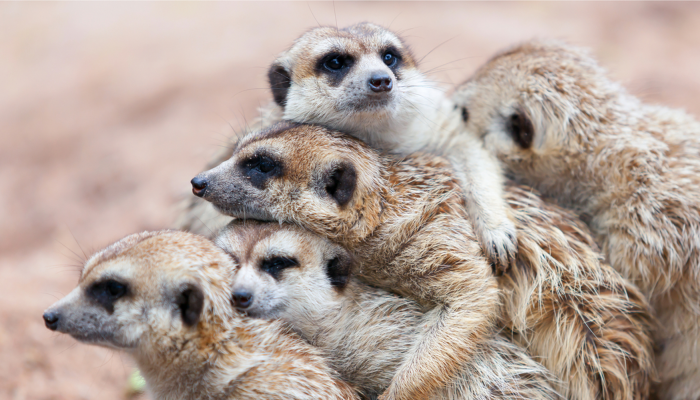
Internet & Phone Service
Phone
South Africa has a vast mobile phone network with 4G, 3G and GSM digital networks.
If you plan to use your mobile phone while traveling in South Africa, research international data roaming charges along with potential call costs. Make sure your phone is equipped for South Africa's digital networks and is unlocked for international travel.
If your phone is unlocked and compatible, it is possible to purchase a pay-as-you-go SIM card.
If you plan to leave your mobile phone at home, anothe option is to purchase kits with a phone equipped with a prepaid SIM card.
- However, South Africa requires an ID and proof of South African address to purchase and register a SIM card. Your proof of address may be a signed statement from your accommodation or host or an accommodation receipt.
Internet
You won't find it difficult to access the internet in South Africa, though connections aren't always the fastest. Most accommodations offer internet access, though look for the (W) symbol to look for places that offer wi-fi.

Power
South Africa uses the standard European 230V/50hz. Because of that, travelers from North America should make sure they have the necessary plugs or adapters to charge electronics. Outlets accept 2 or 3-prong plugs with round pins.

Getting There
Flying to South Africa from North America
Traveling from North America to South Africa can be a bit of a hassle. The most assured way is finding a flight through Europe. The cheapest tickets are likely to be found via London, but most European capitals will have flights to Cape Town or Johannesburg.
Another option for travelers on the West Coast is to go through Asia; most major Asian cities will have connecting flights to Johannesburg.
FAQ's
What immunizations are recommended or required?
While there are no mandatory vaccinations required for visiting South Africa, the Center for Disease Control and Prevention (CDC) advises that travelers are up-to-date on their routine immunizations. This includes tetanus, hepatitis A, hepatitis B, diptheria, and typhoid, as well as measles, mumps, and rubella. A yellow fever certificate may be required for travelers coming from endemic zones in the Americas and Africa.
Some parts of South Africa have a low threat of malaria, including the province of KwaZulu-Natal and Limpopo where Kruger National Park is located. If you’re planning on visiting these areas, you should chat with your physician about suitable anti-malarial drugs before departure. It’s also advisable that you wear long-sleeve shirts and pants to prevent mosquito bites, particularly during the summer months.
Can I drink the water in South Africa?
It is generally safe to drink tap water in most of South Africa’s urban areas. However, not all tap water in rural areas is safe for consumption and it’s recommended that you drink bottled or treated water to be on the safe side. Bottled water is readily available in supermarkets and corner stores throughout the country. Most restaurants in South Africa have high hygiene standards when it comes to food preparation, so there shouldn’t be any issues eating raw vegetables, salads, or peeled fruit.
What type of Currency is used? Exchange Rate? Are US dollars accepted?
In South Africa, the official currency is the Rand (ZAR), with $1USD equal to around R15 at the time of writing. Banknotes are available in R200, R100, R50, R 20, and R10 denominations while the most frequently used coins are R5, R2, R1, 50¢, 20¢, and 10¢.
Some tourist-oriented businesses in South Africa will accept US Dollars and they may be used to pay for some safaris and/or entry into some national parks. Credit and debit cards are readily accepted by larger businesses, although it’s good to carry Rand if you’re traveling to more remote parts of the country. ATMs offering 24-hour service can be found even in small towns, although it’s best to withdraw money before traveling to nature reserve lodges where there may not be cashpoints.
You can exchange major foreign currencies at most banks or at currency exchange houses. South Africa’s banks have variable opening hours, although most are open from at least 9:00 to 15:30 on weekdays and on Saturday mornings.
What time zone is South Africa in?
South Africa operates on South African Standard Time (GMT+2) and does not observe daylight savings time.
What is the official language of South Africa?
South Africa has 11 official languages - Afrikaans, English, Ndebele, Pedi, Sotho, Swati, Tsonga, Tswana, Venda, Xhosa, and Zulu. There are also dozens of unofficial First Nations languages that are protected under the Constitution of South Africa. English is the primary language used in government discourse and is widely spoken throughout the country. Afrikaans evolved in the 16th century during the Dutch colonization of South Africa and is the first language for a large percentage of the population. Most South Africans can speak two languages fluently, if not more!
Do I need a visa or passport to travel to South Africa?
A passport with at least 30 days of validity after the expiry of your intended visit is required for entry into South Africa and you should have at least two free pages for entry and exit stamps. Visas are not required to enter the country for citizens of most European countries, the United States, Canada, Australia, and New Zealand for stays of up to 90 days.
Do I need Travel Insurance?
While it’s not compulsory to take out travel insurance to visit South Africa, we highly recommend that you purchase a policy for peace of mind. It will provide financial assistance in case the unexpected happens, with most policies covering medical expenses, theft, and transportation delays. Before you purchase a travel insurance policy, be sure to check if there are any activities or “known events” that are excluded from claims.
What is the best way to get around once I'm there?
If you’re limited on time, flying between South Africa’s major cities is the most convenient way of getting around, particularly when you consider the country’s sprawling size. In addition to South African Airways, there are several budget carriers that make air travel affordable.
But if time allows, hiring your own car is the best way to see South Africa and is helped by the country’s extensive and well-maintained road system. You’ll drive through breathtaking landscapes and charming towns that you might otherwise miss if hopping between the country’s big-ticket attractions by plane. Most of the international rental companies are represented at the country’s airports, as are a few local operators.
Another spectacular way of seeing the country is by rail, with South Africa boasting two of the world’s top train trips. Step aboard the Rovos Rail or the Blue Train for the luxurious journey from Pretoria to Cape Town or take advantage of the major rail routes covered by Shosholoza Meyl. Bus travel is a more affordable way to get around the country and with three major intercity bus companies, prices are competitive. For long-distance journeys, you can book comfortable recliner seats - a “must” for the 19-hour journey between Johannesburg and Cape Town.
What is the weather like in South Africa?
South Africa has a fairly temperate climate due to its proximity to both the Atlantic and Indian Oceans. However, due to varied topography and the influence of the oceans, there is great variety of climate zones within the country, ranging from extreme desert to tropical. These zones vary mostly by geography.
South-Westernmost Coast:
Part of the Western Cape province, the south-western coast is essentially a classic mediterranean climate. This region is typically hot and dry in the summer, with mild, somewhat rainy winters. However, it is important to remember that, since South Africa is in the Southern Hemisphere, the rainy months are typically May to August.
Eastern Cape:
Part of the KwaZulu-Natal provinces, the Eastern Cape also has a mediterranean climate. Rain tends to fall throughout the year as opposed to falling exclusively in the winter months.
Northern Cape:
The Northern Cape province is mostly arid, receiving an average rainfall of about eight inches a year. Comparatively, certain regions in the Western Cape province receive as much as 40 inches a year. Much of the Northern Cape province deals with extreme heat during the summers, with average January temperatures around 86 to 91 °F. Winters in this region are generally much cooler, with July temperatures topping out at around 65 °F, and are mostly dry. However, some regions within the Northern Cape province, particularly Sutherland, experience bitterly cold winters and frequently get snow.
Steppe:
South Africa's large steppe region, where Johannesburg is located, encompasses much of central South Africa, as well as some northern and southern territory. This region, encompassing parts of the Free State, north west, and Limpopo provinces, enjoys a typically mild, sunny climate that is mostly dry, with the occasional summer downpour. During the winter, the temperature occasionally drops below freezing causing a frost, but it rarely snows.
When are the best times to visit South Africa?
The best time to visit South Africa depends on where you want to go, with distinct climatic zones across the country. Summer (December through to February) is the most popular time to travel when South Africans are on their annual holidays and the coastal resorts fill with people. The shoulder months of November or March are good alternatives if you want favorable weather but without the crowds.
Summers in Cape Town and along the Garden Route tend to be mild while KwaZulu-Natal experiences subtropical conditions, with mist often blanketing the Drakensberg range. Johannesburg and Pretoria enjoy hot summers with occasional thunderstorms.
Between November and February is considered the best time to visit for birdwatching while big-game wildlife viewing is at its best during the cooler months from May to September. That being said, it’s worth keeping in mind that temperatures can drop to below zero in some parts of South Africa during the winter. While the northern regions tend to be dry during this period, Cape Town experiences its majority of rainfall between June and August.
If you’re traveling throughout the entire country, consider visiting in September when you’ll get the best conditions across the board, as well as having a good chance of seeing whales along the coastline.
What kind of adapters will I need for my electronics?
Throughout South Africa, electricity is supplied at 230 volts and four different plug types are used - Types C, D, M, and N. All have at least two round pins, although some have three in a triangular pattern.
Will I find cell phone service and internet in South Africa?
South Africa has a vast mobile phone network with 4G, 3G and GSM digital networks. If you plan to use your mobile phone while traveling in South Africa, research international data roaming charges along with potential call costs. Make sure your phone is equipped for South Africa's digital networks and is unlocked for international travel.
If your phone is unlocked and compatible, it is possible to purchase a pay-as-you-go SIM card. If you plan to leave your mobile phone at home, another option is to purchase kits with a phone equipped with a prepaid SIM card. However, South Africa requires an ID and proof of South African address to purchase and register a SIM card. Your proof of address may be a signed statement from your accommodation or host or an accommodation receipt.
For internet, you won't find it difficult to access the internet in South Africa, though connections aren't always the fastest. Most accommodations offer internet access, though look for the (W) symbol to look for places that offer wi-fi.
How much should I tip in South Africa?
Tipping is a standard practice in South Africa’s service industry and many people rely on tips to make a living wage. In restaurants, it’s expected that you tip at least 10-15% of the bill, although a service charge may already be added for larger groups. Beauty professionals such as hairdressers and nail technicians should also be tipped around 10-15% of the overall bill while hotel porters will expect the equivalent of $1 USD per bag.
Car guards are common throughout South Africa and can be both formal (employed by shopping centers) and informal. In either case, it’s expected that you pay between R5 to R10 if they are keeping an eye on your vehicle and provided there’s no additional charge for using the parking area. When stopping for gas, it’s commonplace that an attendant fills it for you and they will sometimes offer to wash your windows or check your tire pressure. Tip anywhere between R5 and R20, depending on what additional services are provided. If you’re exploring with a safari guide, it’s customary to tip between R100 and R250 per couple per night.
Are there cultural sensitivities I should be aware of?
South Africa is a culturally diverse country, with a history of racism that still has a lingering effect on society today. Most people identify as belonging to one of several cultural groups whose beliefs and traditions differ strongly from one another. It’s important to be sensitive to these issues and avoid making strong remarks or generalizations about the country’s recent history.
Generally speaking, South Africans greet one another by shaking hands, with people in rural villages often using two hands. In some cultural groups, it’s impolite to make gestures with the left hand and you should receive items with both hands held out as a cup.
Some cultural groups are more likely to follow “African time” than others and the terms “now-now” and “just now” are used to the confusion of visitors. “Now-now” means to do something almost immediately while “just now” means you will do it shortly.
It is polite to remove your shoes before entering most homes in South Africa and the country is renowned for its hospitality. Avoid being too complimentary of homewares or accessories, however, as people are likely to insist you take it as a gift, even if it’s something they’d actually prefer to keep.
What is the food like? Any special dishes or local delicacies I should try?
South African cuisine reflects both indigenous culinary traditions and those brought by the colonizing Dutch and British. The Cape Malay cuisine is influenced by Malaysian and Indonesian traditions while Indian and Chinese immigrants brought spices, seasonings, and dishes that are now widely available throughout the country.
One of South Africa’s most quintessential dishes is potjiekos, a little pot filled with meat, vegetables, and potatoes that’s traditionally cooked outside. Boerewor sausages are another “must” for meat lovers, as is the ever-popular South African biltong. Also look out for bobotie, a dish made from minced meat, spices, and fruit that’s topped with a savory custard and baked in the oven.
Pap is a cornmeal porridge that accompanies many meals and is always part of the spread at South African braais (barbecues). Chakalaka is also a staple, with baked beans, carrots, spices, and peppers comprising this tasty relish. If you’re visiting Durban, don’t miss the opportunity to feast on the local version of curry, with the city boasting some of the best in the world. When it comes to dessert, you can’t go past milk tart (South Africa’s answer to custard tart) or malva pudding, a sticky sweet that incorporates apricot jam.
There’s no denying that South Africa produces some of the world’s finest wines, particularly in and around the Cape Winelands. Cellar door hopping through the region’s vineyard-swathed landscapes is high on many visitors’ lists of things to do. But the county also has a rich history of beer production, with traditional beer being brewed from sorghum well before European arrival. Today, you can still sample this unfiltered and cloudy brew in some parts of the country or mingle with the locals while drinking Castle Lager and Black Label at a shebeen.
Are there any luggage restrictions for charter safari flights?
If you’re traveling on small plane charter flights to and from South Africa’s wildlife reserves, it’s important to keep in mind the luggage restrictions. Most carriers will only accept bags that are less than 20kg in weight and are soft-sided (ie. no hard suitcases). Some will allow bags with one hard edge (eg. a base with wheels) but the majority of the bag must be soft, such as a duffel bag.
How do I get to South Africa?
Cape Town International Airport and O.R. Tambo International Airport near Johannesburg are the main aviation gateways to South Africa, with flights to destinations across the globe. Long-distance buses and trains traverse the country, making it easy to get between major towns and cities, and there is a reliable network of domestic flights. Most of the country’s parks and reserves are easily accessible by vehicle, although charter flights are available to some remote airstrips.
What currency is used in South Africa? Can I use my debit or credit card?
In South Africa, the official currency is the Rand (ZAR), with $1USD equal to around R18 at the time of writing. Banknotes are available in R200, R100, R50, R 20, and R10 denominations while the most frequently used coins are R5, R2, R1, 50¢, 20¢, and 10¢.
Some tourist-oriented businesses in South Africa will accept US Dollars and they may be used to pay for some safaris and/or entry into some national parks. Credit and debit cards are readily accepted by larger businesses, although it’s good to carry Rand if you’re traveling to more remote parts of the country. ATMs offering 24-hour service can be found even in small towns, although it’s best to withdraw money before traveling to nature reserve lodges where there may not be cashpoints.
You can exchange major foreign currencies at most banks or at currency exchange houses. South Africa’s banks have variable opening hours, although most are open from at least 9:00 to 15:30 on weekdays and on Saturday mornings.
How can I prepare for a safari tour? What should I pack?
Casual, comfortable garments that are quick drying are a staple of safari travel, with neutral colors such as beige, khaki, or green helping you to blend in with the natural environment. Always pack a couple of long sleeves shirts and long pants that will guard against mosquito bites at night.
Don’t forget to pack a sweater for the chilly early mornings and evenings, plus a lightweight waterproof jacket. Walking shoes with good grip and flip flops/sandals for getting around the camp are the only footwear you’ll need!
In terms of accessories, pack a broad-rimmed hat, sunglasses, and sunscreen, as well as insect repellant and any prescription medication to might need. A pair of binoculars may also come in useful and most guests opt to bring a high-quality camera to document their experiences.
Most importantly, don’t forget your passport and any vaccination records you need, as well as documentation of a comprehensive travel insurance policy.
Can I book a custom safari for my family? What is the minimum age requirement?
All of our private tours are custom-designed, including family safaris. Depending on your interests and preferred destinations, we can tailor an itinerary to suit. The minimum age requirement for children differs depending on the places you want to visit and the activities you want to participate in.
Can you accommodate dietary restrictions?
On all of our custom safaris and private tours, we do our best to accommodate dietary restrictions, provided we have prior knowledge. That being said, in some remote areas, particular ingredients may be difficult to find and suitable alternatives will be sought.
What are the accommodations like?
Our accommodation options range from basic camping to glamping at upmarket safari camps, as well as family-focused resorts and high-end lodges. In some destinations, we can also create itineraries staying at private villas, complete with in-house staff. Glamping tents are among the most popular of our accommodation options as they immerse you in the wilderness environment while keeping bugs and wildlife out.



